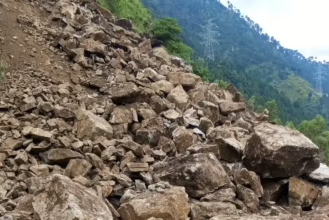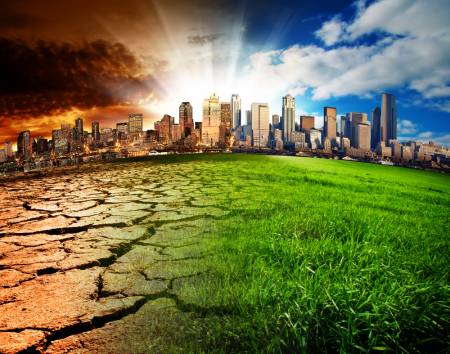By: Usman Torwali
In the picturesque valley of Swat live the Torwali community. Spanning over 5,000 history and one of the ancient indigenous communities, the Torwali people have inhabited the mountainous region of tehsil Bahrain spreading over 30 kilometers. Despite natural disasters and external invasions this community has retained their unique cultural traditions, customs, beliefs and centuries old communal forms and memoirs. The community consists of over 150,000 population, almost one third of it has migrated to commercial cities in search of livelihood as local economy faces tremendous setbacks amid recurring flashfloods.
The local economy is by and large a river-based economy underpinning agriculture, tourism and transportation. Thousands of tourists visit Bahrain, a commercial town of the Torwali people, and stay there for days before leaving for Kalam, Mahodand and Shahi Bagh allures. Bahrain is an Arabic word means two oceans, here means two rivers. Before it was called Braniyal derived from word Bhounal whereas Bhoun means indigenous. Today Bahrain is home to Torwali indigenous people and is a central and commercial town for Torwali community. For visitors Bahrain is a center of attraction as it presents a picturesque landscape with hospitable hoteling industry, and river views for sightseeing, boating, swimming and picnic.
River Swat, being backbone of the local community, is fed by melting glaciers in the lap of Hindu Kush throughout the year. It is mainly formed at the confluence of Gabral, Usho and other minor tributaries in Kalam and flows all the way through lower Swat irrigating over 160, 000 acres of agricultural land and finally terminates in Kabul River, near Charsadda. In the Torwali belt, tributaries in Pushmal, Mankiyal, Cham Gharai, Kedam, Torwal and the dried-up Daral are major contributor to river Swat. Daral river is diverted into the tunnel for Daral Khwar hydropower project at Bahrain town. The tributary now portrays a despairing picture of dirt, plastic bags and smells devastating the beauty of Bahrain and spoiling renthouses and hotels alongside it. The Pedo designed Daral Khwar Hydropower project promised enough e-flow in the river however the promised is realized during the flashfloods alone, ruining local infrastructure and commercial places.
There are several points at the bank of river Swat such as parks, hotels, restaurants, shops, tea stalls and suspended bridges. Tourism also supports local fisheries, locally crafted embroidery articles, handicrafts and antique shops. It immensely contributes indirectly to local transportation and retail industry as well.
Given such a significant role of river Swat in the local economy and agriculture, government must have boasted local tourism by promoting and investing in the region however un contraire government is set upon diverging the river by PEDO proposed Madyan Hydropower project designed to convert the river into tunnels. The tunnel is 12kilometers long bypassing Bahrain including more than 80 hotels, dozens of restaurants, markets and other tourists’ attractions. Turning the river is not only devastating for local economy but fatal for biodiversity and ecosystem as river Swat supports aquatic life and plays a key role in the local ecosystem.
In six villages namely Ghwarejo, Punkia, Darolai, Shagai, Ayeen and Mankar the agricultural lands and household water needs are fulfilled by thirty-three freshwater springs. However, tunnel construction generated vibration will fill the water-veins of these springs and will dry them up. The locals have already experienced drying up springs in the Daral Khwar project. Moreover, the Environmental and Social Impact Assessment and Resettlement Action Plan reports of Pedo state that the contractors will be responsible for the drying up of springs and devastation of agricultural lands in these villages. Locals also protest over the making of these reports as they have not duly considered in the development of the reports so much so that 50 kilometers away, Matiltan hydro power project, villages names are copy-pasted in the reports for Bahrain. This seems like a mockery of the local people living here for thousands of years. The reports also stated that the local population is Pashto speaking Pashtun tribes whereas very few of the Torwali people barely understand Pashto language as their native language is Torwali.
The locals have launched Darya Bachawo Tehreek, saving river Swat movement, against the PEDO proposed project. This movement is representative of the local population consisting of elders, lawyers, social activists, students, and civil society. The movement is so far engaged with the World Bank and PEDO officials however no concrete agreements are made between the parties as the PEDO is dread set over diverging the river into tunnels.
The government must consider the concerns and grievances of local population before constructing a third hydro power project in the locality. The first two includes Daral hydro power project and Matiltan project (under construction). Moreover, hydropower projects should be constructed in unpopulated areas and more focus should be laid on cascading dam, wind or solar energy alternatives instead of hydropower projects containing tunnels, as tourism, agriculture, and environment must also be protected while going for energy projects.
The construction of such projects is justified over the falsely perceived community development. However, in the Madyan Hydro Power Project the local community is not even considered in naming the project. Madyan is a 10 kilometers away Pashton dominated town and will be unscathed by the project effects as the tunnel consists only of Torwali people area, but the project is named as Madyan, quite surprising. The local community development entail investment in weak, fragmented and inefficient education, healthcare, and local infrastructure. Diverting rivers cannot be equated with community development. Government should prioritize the protection of local economies, agriculture and environment in the development of hydropower projects in indigenous populated areas.
Also read: The tragedy of the commons: overpopulation, greed, and looming ecological collapse






